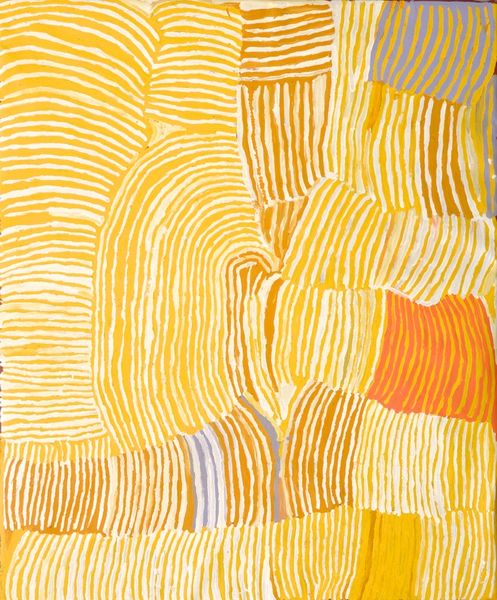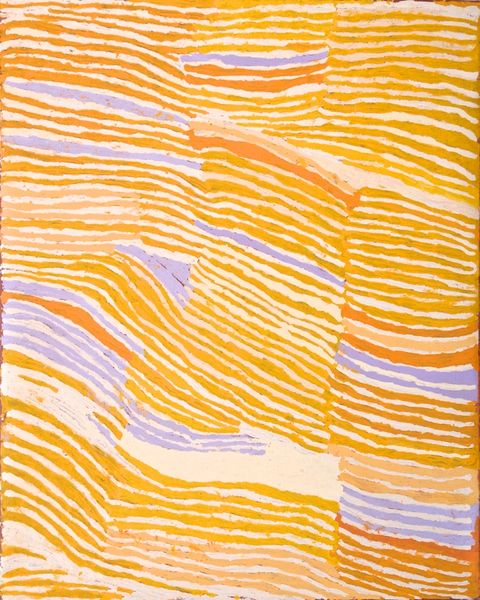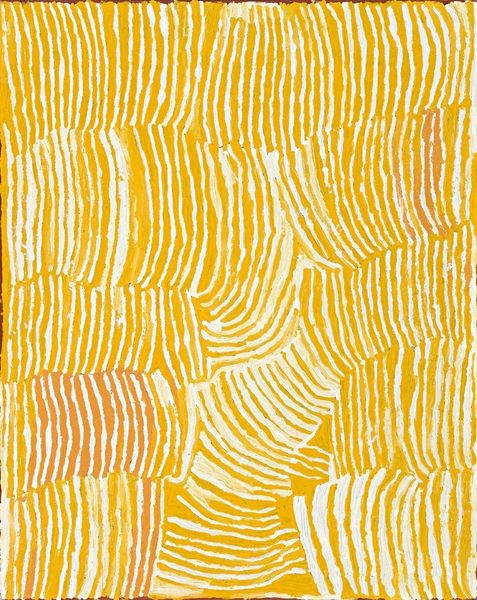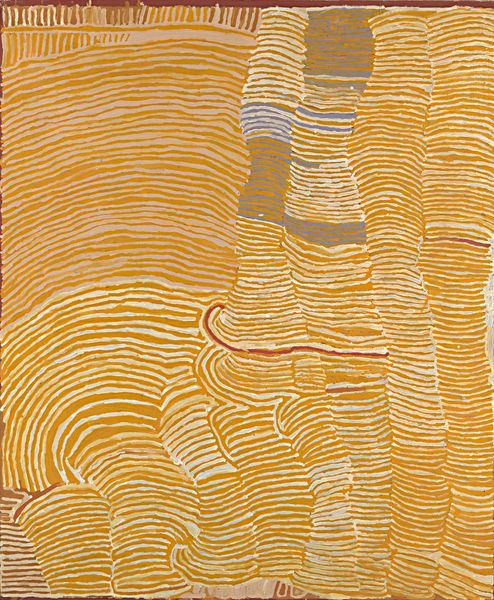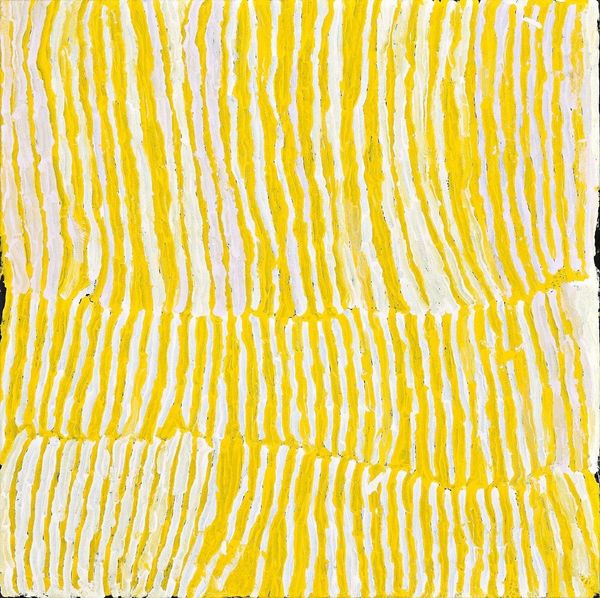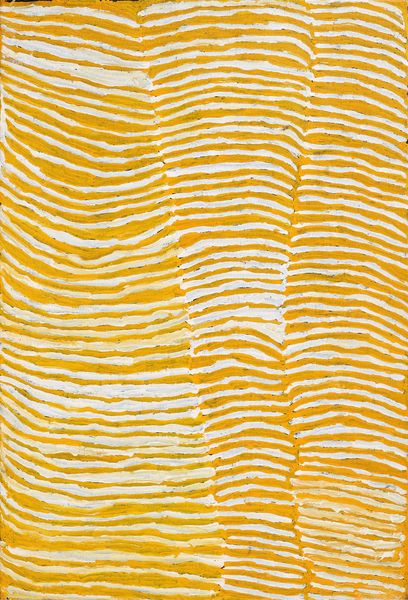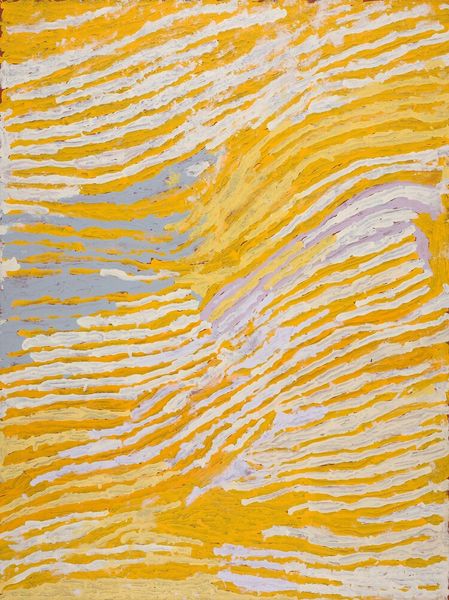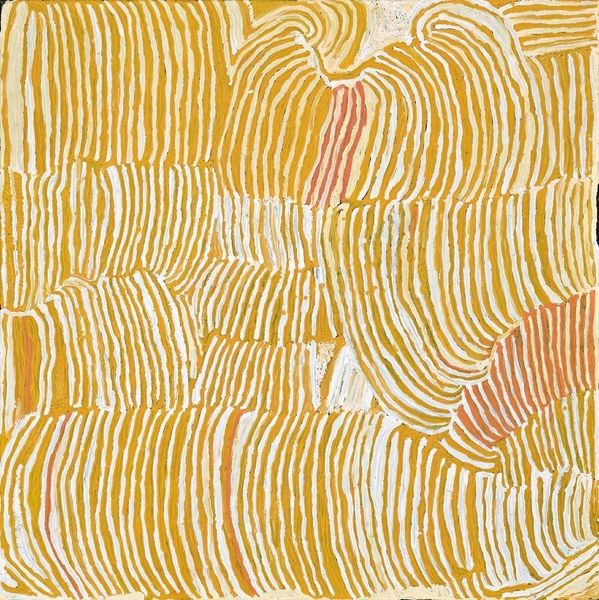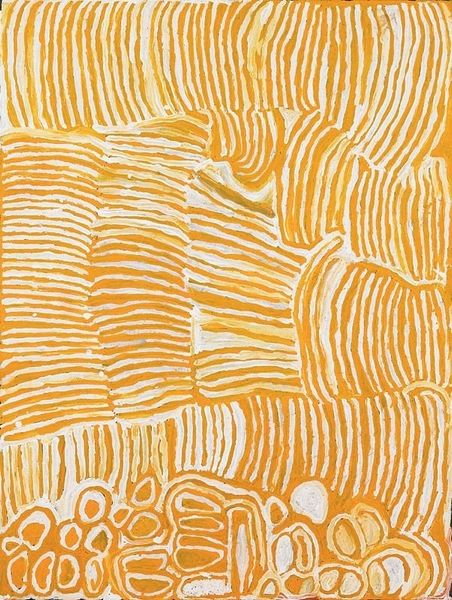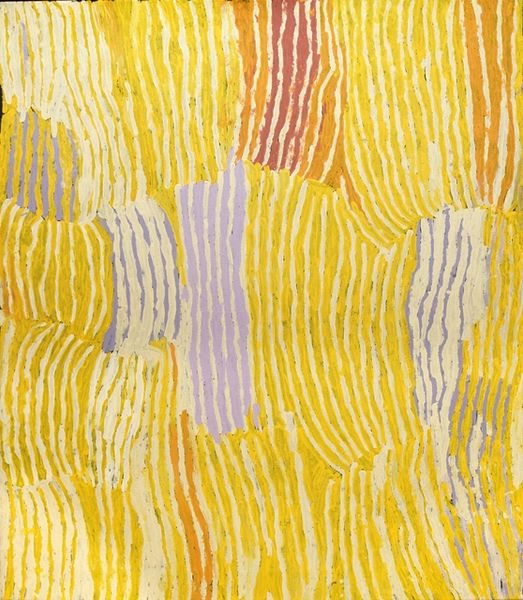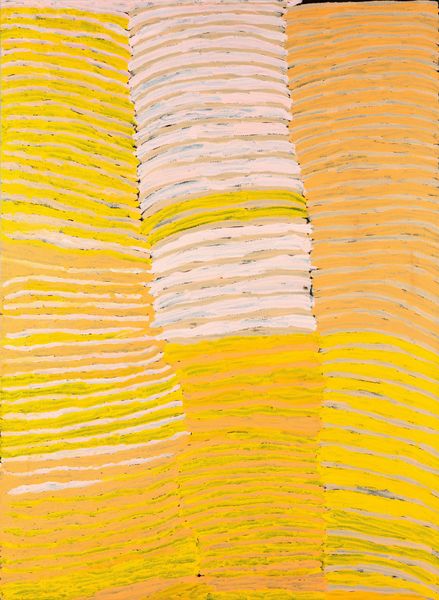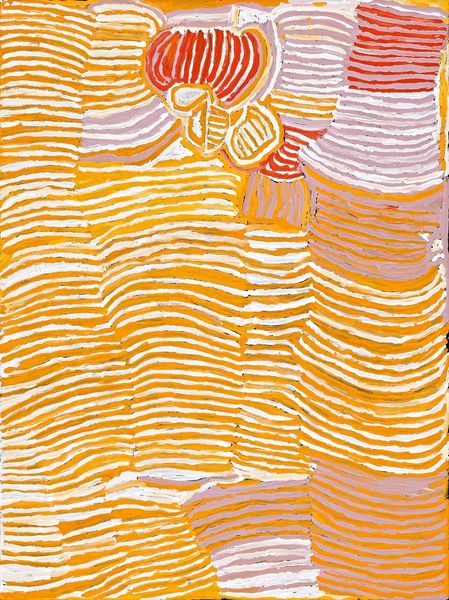
painting, acrylic-paint
#
abstract expressionism
#
organic
#
painting
#
acrylic-paint
#
geometric pattern
#
abstract pattern
#
organic pattern
#
abstraction
Copyright: Makinti Napanangka,Fair Use
Editor: Here we have Makinti Napanangka’s "Untitled," painted in 2003 with acrylic. The patterns create an interesting sense of movement. What stands out to you? Curator: Well, knowing this is by an Indigenous Australian artist significantly shapes my view. The patterns and colours, while seemingly abstract to some, emerge from a deep well of cultural knowledge and history, which has to be acknowledged when engaging with this artwork. The linear elements remind me of topographical maps seen from above or sandhills in the desert. Editor: So, is it less about what *I* see and more about understanding its cultural context? Curator: Exactly. Western art history tends to isolate the artist and the object, but in this case, the community's artistic traditions and experiences play a vital role. We must also consider the history of displaying Indigenous art in Western galleries; Whose narratives were amplified, and at what cost? Editor: That's something I hadn’t considered. It's not just about appreciating the aesthetics, but also about the power dynamics in art institutions. Curator: Precisely. What purpose does displaying this artwork in *this* setting serve? Are we truly amplifying the artist's voice, or are we merely extracting elements for a Western audience? Understanding the history informs our reception of the piece today. Editor: I definitely have a lot more to think about when I look at art now. Thanks for sharing! Curator: My pleasure! It’s a continual process of learning and re-evaluating.
Comments
No comments
Be the first to comment and join the conversation on the ultimate creative platform.
